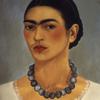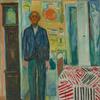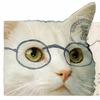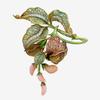CA-NY: Post-War Migration of Abstract Expressionists
- NEW YORK , New York
- /
- October 31, 2019
ANITA SHAPOLSKY GALLERY
152 East 65th St, New York, NY 10065
212.452.1094
anitashapolskygallery.com
info@anitashapolskygallery.com
CA-NY: Post-War Migration of Abstract Expressionists
ERNEST BRIGGS, LAWRENCE CALCAGNO, HERMAN CHERRY
JOHN HULTBERG, RICHARDS RUBEN, and JON SCHUELER
SEPTEMBER 11 - JANUARY 3, 2020
Anita Shapolsky Gallery is pleased to present CANY: Post-War Migration of Abstract Expressionists, a group exhibition of select Bay Area and Los Angeles artists who followed the surge of Abstract Expressionists across the country in the 1950s to participate in the flourishing sister movement: the New York School of Abstract Expressionism.
The Bay Area School of Abstract Expressionism was centered around the California School of Fine Arts (CSFA) in San Francisco and its director, Douglas MacAgy. MacAgy was hired in 1945 in an effort to revitalize and modernize the overly-traditional program. He began by hiring a plethora of young artists, including Richard Diebenkorn, Stanley Hayter, and Clyfford Still, who, while largely inexperienced in teaching, were nevertheless instrumental in educating a wave of second-generation Abstract Expressionists. Like many of the students at the CSFA, Ernest Briggs, Lawrence Calcagno, John Hultberg, and Jon Schueler used their assistance from the GI Bill to enroll in the program shortly after their return from service in World War II. Their shared experiences in the war, along with their closeness in age, allowed the professors and students to form a strong, supportive, and often collaborative atmosphere.
While the CSFA cultivated its own unique school of abstract art, it also exposed its students to New York abstract artists like Mark Rothko and Ad Reinhardt through summer sessions from 1947 to 1949. Hultberg found Rothko’s guest lectures about the New York art scene convincing and he decided to continue his practice on the East Coast. Briggs, Calcagno, and Schueler followed suit in the early 1950s, a migration catalyzed both by Still’s decision to move to New York and also by the firing of MacAgy. LA-based abstract artists Richards Ruben and Herman Cherry would join the migration by the 1960s.
The exhibition CA-NY: Post-War Migration of Abstract Expressionists attempts to visually demonstrate the exchange of ideas that occurred between both the Bay Area and New York Schools of Abstract Expressionism. While the two schools shared a belief in the active process of painting to express one’s innermost thoughts and feelings, the New York artists were more heavily affected by trends in European art. The Californian artists in this exhibition created a style that was truly American, often rooted in natural forms rather than urban landscapes.
After moving to New York in 1953, Ernest Briggs’ style would shift multiple times through the 1960s and 70s due to the growing popularity of Pop Art, Minimalism, and hard-edge painting among artists in New York. Briggs, however, consistently remained true to the practice of action-painting. He also experimented with acrylic paint and small-scale works from 1963 to 1975. His paintings in this exhibit exemplify Briggs’ range of compositional strategies, canvas size, and technique. Many of these works are from a period of his oeuvre that are rarely shown.
Lawrence Calcagno was exposed to nature at a young age, growing up on his family’s ranch outside of Big Sur. His drawings of native plants and landscapes encountered on horseback as a child informed his abstract compositions like Blue Painting, which suggests an infinite blue expanse where sea meets sky. The landscapes Calcagno witnessed while traveling around Europe and Northern Africa between 1950 and 1955, along with diverse ideas from artists he met while studying at Académie de la Grande Chaumiere and Istituto d’arte Statale, were also extremely foundational to his style.
Though he was born in Atlantic City and spent his adolescence in Philadelphia, Herman Cherry received the bulk of his formal education in Los Angeles. Cherry studied at the Otis Art Institute in 1927 and eventually the Art Student’s League, where his style was shaped under synchronist Stanton MacDonald-Wright and Regionalist Thomas Hart Benton. Cherry left California in 1941 to study murals in Mexico City before ultimately settling in Woodstock, making his migration to the West Coast before MacAgy’s historic program at the CSFA even began. In 1947, Cherry would solidify his place within the New York art scene with a show at the Weyhe Gallery of his signature “pictographs,” mixed media sculptures that materialized the playful geometric forms found in his abstract paintings like Cocoon 5.
John Hultberg was part of the “Sausalito Six,” a group of artists, including Diebenkorn, Frank Lobdell, and George Stillman, who lived just outside of San Francisco. Hultberg studied with them at the CSFA after returning from the Navy in 1946, although his time in the program was short. He felt a divide within the faculty MacAgy assembled: Still’s camp that favored purely abstract, metaphysical art and Diebenkorn’s more fluid incorporation of both figurative and abstract forms, often inspired by nature. Hultberg considered himself part of the latter group, including images of ships and their harbors in the Bay Area in his paintings and deriving inspiration from the landscapes of his childhood spent in Concord, CA. Hultberg never identified with any one particular style, combining elements from Surrealism, Cubism, Abstract Expressionism, and the various trends he encountered in both California and New York.
While MacAgy was promoting abstract art in the Bay Area, Richards Ruben - a Los Angeles native – helped establish Abstract Expressionism in Southern California. After serving in WWII, he returned to his hometown in 1944 to attend the Chouinard Art Institute. Ruben would teach painting there, at the Claremont Colleges, and UCLA until he moved to New York in the 1960s, where he continued teaching at NYU, Columbia, and Pratt. The large-scale paintings in his “City” series captured the differing energies of the urban landscapes he encountered in LA and New York. Ruben is most recognized, however, by his uniquely shaped canvases that enhance the geometric forms and lines in his paintings.
Skyscapes, rather than landscapes, were what fascinated Jon Schueler. The sky permeated his childhood spent in the open fields around Milwaukee, Wisconsin; clouds of smoke surrounded the B-17 bomber plane he flew in the Air Force during WWII. Under Clyfford Still’s teachings, Schueler conformed to the impasto technique that was popular at the CSFA when he studied there from 1949 until he moved to New York in 1951. His transition towards softer, more blended colors would only come in the 1960s, after he decided to leave the urban landscapes of San Francisco and New York behind in favor of the open sky in Mallaig, Scotland. His matured style applied the technical aspects of both Bay Area and New York schools of Abstract Expressionism to the subject matter that captivated him the most: the sky.
Anita Shapolsky Gallery is honored to continue its legacy of promoting the appreciation of Abstract Expressionism in our historic brownstone on New York’s Upper East Side.
Gallery Hours: Tues - Fri, 11:00am - 6:00pm
Saturdays by appointment
152 East 65th St, New York, NY 10065
212.452.1094
anitashapolskygallery.com
info@anitashapolskygallery.com








100x100_c.jpg)






